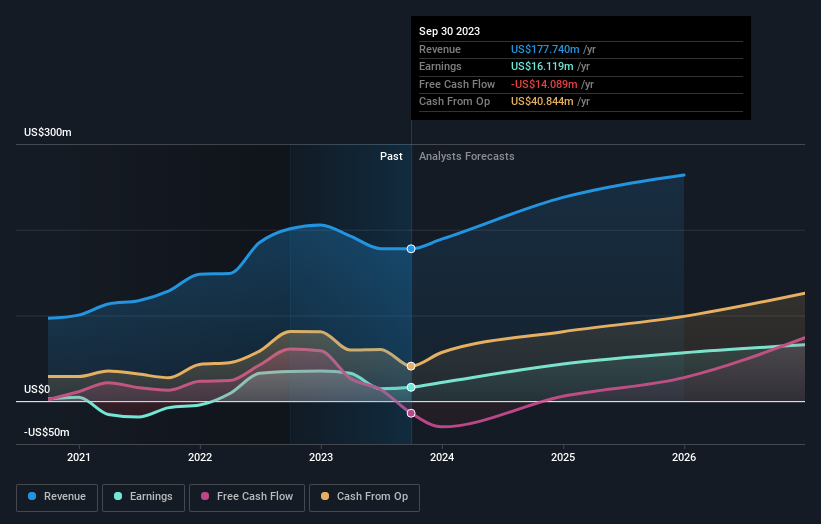Recent 6.2% pullback would hurt Montauk Renewables, Inc. (NASDAQ:MNTK) insiders
Key Insights
Montauk Renewables' significant insider ownership suggests inherent interests in company's expansion
A total of 2 investors have a majority stake in the company with 55% ownership
A look at the shareholders of Montauk Renewables, Inc. (NASDAQ:MNTK) can tell us which group is most powerful. We can see that individual insiders own the lion's share in the company with 54% ownership. That is, the group stands to benefit the most if the stock rises (or lose the most if there is a downturn).
As a result, insiders as a group endured the highest losses after market cap fell by US$75m.
Let's delve deeper into each type of owner of Montauk Renewables, beginning with the chart below.
See our latest analysis for Montauk Renewables
What Does The Institutional Ownership Tell Us About Montauk Renewables?
Institutional investors commonly compare their own returns to the returns of a commonly followed index. So they generally do consider buying larger companies that are included in the relevant benchmark index.
As you can see, institutional investors have a fair amount of stake in Montauk Renewables. This suggests some credibility amongst professional investors. But we can't rely on that fact alone since institutions make bad investments sometimes, just like everyone does. If multiple institutions change their view on a stock at the same time, you could see the share price drop fast. It's therefore worth looking at Montauk Renewables' earnings history below. Of course, the future is what really matters.
Montauk Renewables is not owned by hedge funds. Our data shows that John Copelyn is the largest shareholder with 41% of shares outstanding. For context, the second largest shareholder holds about 14% of the shares outstanding, followed by an ownership of 12% by the third-largest shareholder. Theventheran Govender, who is the third-largest shareholder, also happens to hold the title of Member of the Board of Directors.
A more detailed study of the shareholder registry showed us that 2 of the top shareholders have a considerable amount of ownership in the company, via their 55% stake.
Researching institutional ownership is a good way to gauge and filter a stock's expected performance. The same can be achieved by studying analyst sentiments. There are plenty of analysts covering the stock, so it might be worth seeing what they are forecasting, too.
Insider Ownership Of Montauk Renewables
The definition of an insider can differ slightly between different countries, but members of the board of directors always count. The company management answer to the board and the latter should represent the interests of shareholders. Notably, sometimes top-level managers are on the board themselves.
I generally consider insider ownership to be a good thing. However, on some occasions it makes it more difficult for other shareholders to hold the board accountable for decisions.
Our information suggests that insiders own more than half of Montauk Renewables, Inc.. This gives them effective control of the company. Given it has a market cap of US$1.2b, that means insiders have a whopping US$629m worth of shares in their own names. Most would argue this is a positive, showing strong alignment with shareholders. You can click here to see if they have been selling down their stake.
General Public Ownership
The general public, who are usually individual investors, hold a 10% stake in Montauk Renewables. This size of ownership, while considerable, may not be enough to change company policy if the decision is not in sync with other large shareholders.
Next Steps:
It's always worth thinking about the different groups who own shares in a company. But to understand Montauk Renewables better, we need to consider many other factors. To that end, you should be aware of the 2 warning signs we've spotted with Montauk Renewables .
If you are like me, you may want to think about whether this company will grow or shrink. Luckily, you can check this free report showing analyst forecasts for its future.
NB: Figures in this article are calculated using data from the last twelve months, which refer to the 12-month period ending on the last date of the month the financial statement is dated. This may not be consistent with full year annual report figures.
Have feedback on this article? Concerned about the content? Get in touch with us directly. Alternatively, email editorial-team (at) simplywallst.com.
This article by Simply Wall St is general in nature. We provide commentary based on historical data and analyst forecasts only using an unbiased methodology and our articles are not intended to be financial advice. It does not constitute a recommendation to buy or sell any stock, and does not take account of your objectives, or your financial situation. We aim to bring you long-term focused analysis driven by fundamental data. Note that our analysis may not factor in the latest price-sensitive company announcements or qualitative material. Simply Wall St has no position in any stocks mentioned.


